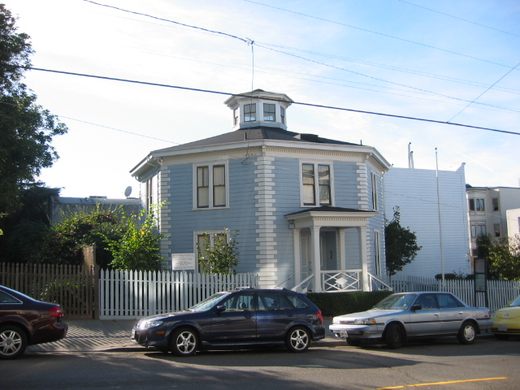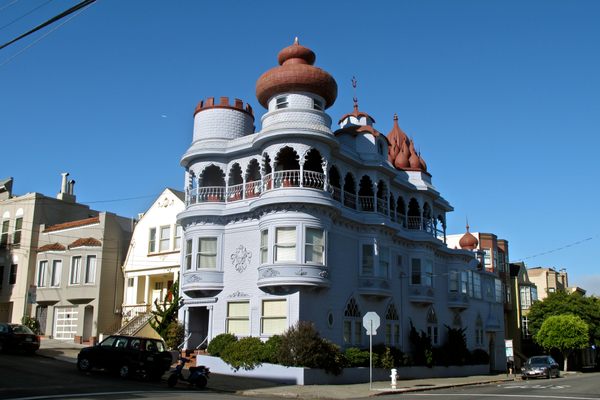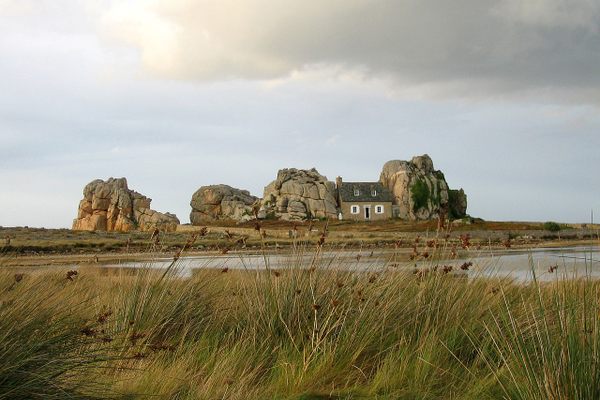McElroy Octagon House
One of few lasting examples of the brief octagon craze that developed into folly.
Only two octagon houses are left standing in San Francisco, but at one point in the 19th century this style of house was promoted as a superior and cutting-edge architectural style. Thousands were built in North America. These houses are usually two stories tall and feature a cupola (the one at McElroy has views of the Golden Gate Bridge).
It all started with a 1848 book published by Orson Squire Fowler titled “The Octagon House: A Home For All, or A New, Cheap, Convenient, and Superior Mode of Building.” Fowler claimed that the ideal but impractical home shape is circular, but the octagon closely approximates the sphere while being much easier to build.
Octagonal houses were supposedly more efficient by using fewer materials while providing more light and being easier to heat. However, the acute angles in the floor plan made it difficult to partition smaller rooms and place furniture.
Fowler built his own enormous octagonal house in New York with four stories and sixty rooms. Unfortunately, the mansion was declared a public health hazard and destroyed in 1897. This house, and eventually the style in general became known as “Fowler’s Folly.”
The McElroy Octagon House in the Cow Hollow neighborhood of San Francisco (the area used to be dairy farms) was built in 1861. It was a family home through the 1920s until it was purchased by a utility company that neglected its upkeep.
The California chapter of the National Society of the Colonial Dames of America bought the house in 1952 for $1 and undertook restoration of the house. This Society still owns the house today and has curated several exhibits in the house relating to American decorative arts.
















Follow us on Twitter to get the latest on the world's hidden wonders.
Like us on Facebook to get the latest on the world's hidden wonders.
Follow us on Twitter Like us on Facebook